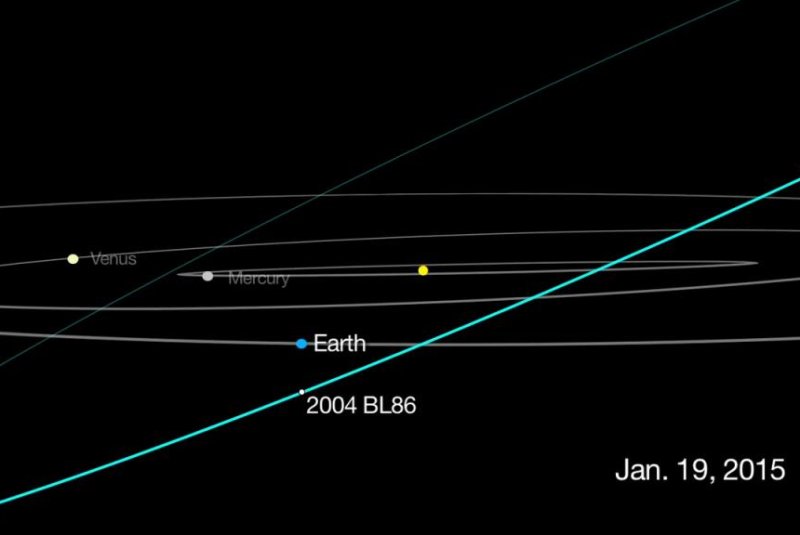1 of 2 | The graphic depicts the trajectory of Monday's asteroid flyby. Photo by NASA/JPL.
PASADENA, Calif., Jan. 23 (UPI) -- It's a bird. It's a plane. It's actually an exceptionally large asteroid, and it's flying by Earth on Monday -- close enough for backyard astronomers to catch a glimpse.
Asteroids pass by Earth on a regular basis. But they are rarely this large. Astronomers at NASA say it won't be until 2027 that an an asteroid this big will again fly this close to the planet.
The massive space rock, named 2004 BL86, will come within 745,000 miles of Earth (about three times the distance between Earth and the moon). While it will likely not be visible with the naked eye, scientists say a small telescope, or even binoculars, should enable a glimpse.
"I may grab my favorite binoculars and give it a shot myself," Don Yeomans, manager of NASA's Near Earth Object Program Office at the Jet Propulsion Laboratory, said in a press release. "Asteroids are something special."
"Not only did asteroids provide Earth with the building blocks of life and much of its water, but in the future, they will become valuable resources for mineral ores and other vital natural resources," Yeomans added. "They will also become the fueling stops for humanity as we continue to explore our solar system. There is something about asteroids that makes me want to look up."
NASA is currently planning a mission to capture an asteroid so that it may be brought into orbit around the Earth's moon.
For the millions of Americans in the Northeast, whose chance to see flying space junk is likely to be obscured by a white wall of snow, the asteroid flyby will be streamed live online.
Detailed star charts from NASA and JPL show the asteroid's trajectory across the night sky if you want to look at it live. The asteroid will be traveling along a path between Jupiter (the brightest object in the night sky) and Procyon (the brightest star in the constellation Canis Minor).
The mountain-sized space rock already reached its closest point to Earth at 11:00 a.m. EST Monday, but the asteroid will be at its brightest and most visible to viewers in the Americas, Europe and Africa from 8:00 p.m. EST Monday night through 1:00 a.m. EST Tuesday morning.















